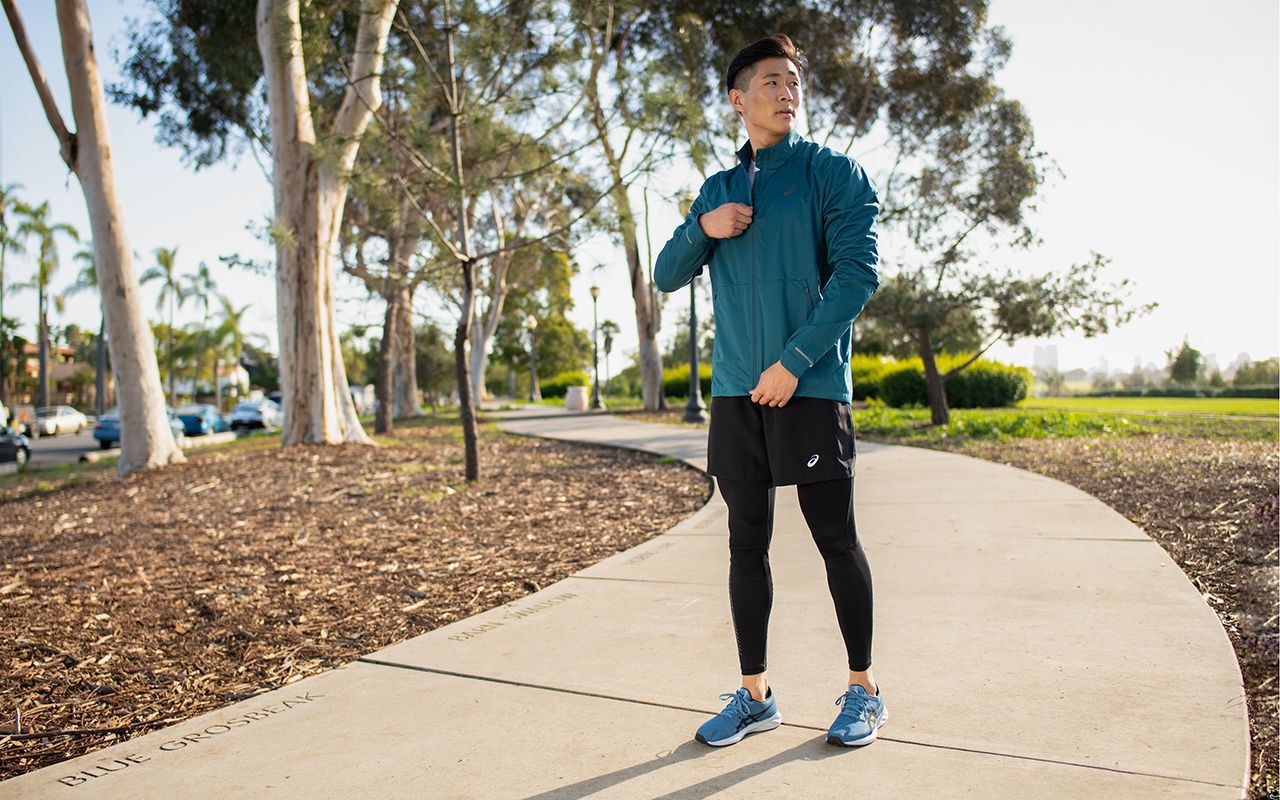LAYERING UP FOR YOUR RUN - BE READY FOR ANY WEATHER CONDITION
It’s important to plan your outfit for all eventualities so no matter what the weather does, you’re always comfortable and can focus on your performance. And that’s where layering comes in.
When it comes to tops, layering is based on three main elements:
- Base-layer – the bottom layer, which sits tighter to the body
- Mid-layer – provides extra warmth on top of the base layer
- Outer or shell – this protects you from the wind and the rain
In unpredictable weather, you’ll probably only want to wear two layers – the full three is usually best reserved for the coldest days of the year.
WHAT TO WEAR WHEN RUNNING IN WINTER
Heading out for a long run on a cold morning poses two main problems:
- Cold starts – in cooler weather, your muscles don’t contract with the same intensity as when it’s warm. You also burn more carbohydrates in the cold and become less efficient at using oxygen so you can tire more quickly.
- Warming up – as the sun comes out and you warm up, you run the risk of overheating. As you overheat, blood rushes to the skin to release sweat, meaning less blood is being pumped into your muscles. This can cause tiredness and, depending on how hot you get, may leave you dehydrated.
So, when deciding what to wear when running in winter, start off warm with a base- and a mid-layer, and as you get into your run, take a layer off to regulate your body temperature. Your base-layer should be made with a breathable fabric, with plenty of ventilation so you can avoid overheating once the weather warms up. You should also build some flexibility into your winter running gear. For example, if it’s cold, start off with a running tube as a scarf that can be converted into a headband or packed away if you no longer need it.
PROTECTING YOURSELF FROM THE RAIN
Just like sweat, rain can cool you down and cause discomfort in the form of chafing, which is much more common when running in wet clothes. So, if rain is forecast, your outer layer should be made of a water-resistant material like Softshell or Ripstop. Unlike everyday raincoats, they are specially designed for running and provide ventilation to and wick sweat away from the skin to keep you dry and comfortable.
HOW TO GO RUNNING IN WINTER: OUR TOP TIPS
When deciding what to wear running in winter, a simple rule of thumb is to add between five and 10 degrees (celsius) to the outside temperature to calculate your running temperature. That will help you determine how many layers you should wear. However, your running temperature is also dependent on other factors such as your running pace, the length of your run and how quickly it takes you to heat up and cool down.
If you are going for a short or easy-paced run, you won’t warm up as much, so you should add around five degrees to the ambient temperature. If you’re going for a fast-paced or long-distance run, you’ll warm up more easily, so add 10 degrees to the outside temperature.
It’s also important to remember that although your core may warm up quite quickly, your extremities such as your hands and your feet will not warm up nearly as much. For that reason, you should always wear running gloves and socks that are appropriate for the conditions.
On windy days, you should also take the wind chill factor into account. Looking at the ‘feels like’ temperature on your local weather report will help you decide what to wear. You should run into the wind on your way out and have a tailwind on the way back. That will prevent you from running into the wind when you’re wet and sweaty and potentially developing a chill.
Be ready for any weather condition with our collection of men's and women's from ASICS.





